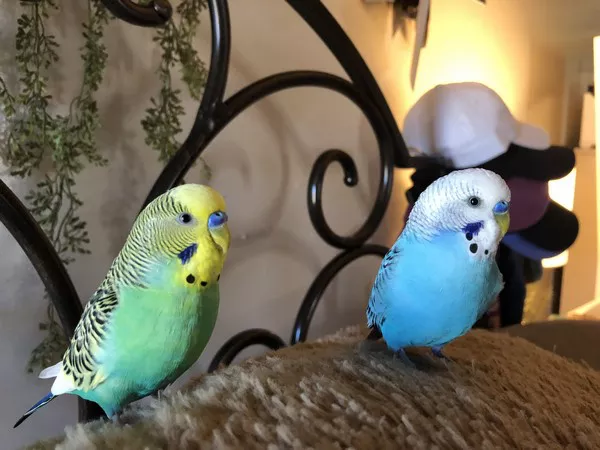Box turtles are fascinating reptilian companions that captivate pet enthusiasts with their unique personalities and distinctive appearances. As responsible caretakers, providing a well-rounded and nutritious diet is crucial to ensuring the health and longevity of these captivating creatures. While vegetables and protein sources play a significant role in their diet, the inclusion of fruits introduces essential vitamins and minerals that contribute to their overall well-being. In this comprehensive guide, we delve into the world of fruits suitable for box turtles, exploring their nutritional benefits, potential pitfalls, and offering practical advice for a balanced and enriching diet.
Understanding the Nutritional Needs of Box Turtles
Before delving into the specifics of fruits, it’s vital to understand the nutritional requirements of box turtles. These omnivores thrive on a diet that includes a mix of vegetables, fruits, and protein sources. The ideal balance ensures they receive essential nutrients like calcium, phosphorus, vitamin D3, and a variety of vitamins and minerals.
Box turtles have diverse dietary needs depending on their age and species. While some are primarily herbivores, others exhibit more omnivorous tendencies. Therefore, tailoring their diet to match their natural preferences is key to promoting optimal health.
The Role of Fruits in a Box Turtle’s Diet
Fruits play a crucial role in providing box turtles with essential vitamins and natural sugars. When incorporated thoughtfully, fruits contribute to a well-rounded diet that supports their overall health. Here are some key benefits of including fruits in a box turtle‘s nutritional repertoire:
Vitamins and Antioxidants: Fruits are rich in vitamins, particularly vitamin C, which acts as a potent antioxidant. Antioxidants help combat oxidative stress, supporting a healthy immune system and reducing the risk of diseases.
Natural Sugars for Energy: The natural sugars found in fruits serve as a valuable energy source for box turtles. This energy is vital for maintaining their activity levels, promoting exploration, and supporting physiological functions.
Hydration: Many fruits have high water content, contributing to hydration. Ensuring your box turtle remains adequately hydrated is crucial for various bodily functions, including digestion and temperature regulation.
Variety in Texture and Flavor: Introducing a variety of fruits provides enrichment by offering different textures and flavors. This variety not only keeps the turtle’s diet interesting but also encourages natural foraging behaviors.
Nutrient Diversity: Different fruits contain a range of nutrients, broadening the spectrum of vitamins and minerals available to box turtles. A diverse diet helps prevent nutritional deficiencies and promotes overall well-being.
Now that we understand the importance of incorporating fruits into a box turtle’s diet, let’s explore the specific fruits that are safe, nutritious, and appealing to these captivating reptiles.
Safe and Nutritious Fruits for Box Turtles
Berries (Strawberries, Blueberries, and Raspberries):
Nutritional Highlights: Berries are rich in antioxidants, particularly vitamin C. They also provide essential minerals like manganese and potassium.
Feeding Tips: Offer berries in moderation as a treat, ensuring they are fresh and thoroughly washed. Remove any uneaten portions promptly to maintain cleanliness.
Apples:
Nutritional Highlights: Apples are a good source of fiber, vitamin C, and various antioxidants.
Feeding Tips: Remove seeds and core before offering slices. Ensure the pieces are appropriately sized to prevent choking hazards.
Bananas:
Nutritional Highlights: Bananas are high in potassium, providing a quick energy boost. They also contain vitamin B6 and vitamin C.
Feeding Tips: Offer small, bite-sized pieces to prevent overconsumption. Moderation is key due to the high sugar content.
Melons (Watermelon, Cantaloupe, and Honeydew):
Nutritional Highlights: Melons are hydrating and rich in vitamins A and C. They also contain antioxidants like lycopene.
Feeding Tips: Remove seeds and rind, offering the fleshy part in small, manageable portions.
Papaya:
Nutritional Highlights: Papaya is a good source of vitamins A, C, and folate. It also contains digestive enzymes like papain.
Feeding Tips: Remove seeds and offer small amounts, gradually increasing as tolerated.
Mango:
Nutritional Highlights: Mangoes provide vitamins A, C, and E. They also contain fiber and beta-carotene.
Feeding Tips: Remove the pit and offer small, bite-sized pieces. Moderation is key due to the high sugar content.
Grapes:
Nutritional Highlights: Grapes contain vitamin K, copper, and antioxidants. They also provide hydration.
Feeding Tips: Cut grapes into halves or quarters to prevent choking. Feed in moderation due to the sugar content.
Pineapple:
Nutritional Highlights: Pineapple is rich in vitamin C, manganese, and bromelain, an enzyme with anti-inflammatory properties.
Feeding Tips: Remove the tough outer skin and core, offering small amounts as an occasional treat.
Cherries:
Nutritional Highlights: Cherries contain antioxidants, including anthocyanins, and provide vitamins A and C.
Feeding Tips: Remove pits and offer cherries in moderation, as excessive consumption can lead to digestive issues.
See Also:What do Wild Box Turtles Eat and Drink?
Peaches:
Nutritional Highlights: Peaches are a good source of vitamins A and C, as well as dietary fiber.
Feeding Tips: Remove the pit and offer small, peeled slices. Moderation is essential due to the sugar content.
Fruits to Avoid or Offer with Caution
While many fruits are suitable for box turtles, some should be avoided or offered sparingly due to potential risks. Here are fruits that may pose challenges:
Citrus Fruits (Oranges, Lemons, Limes): Citrus fruits are high in acidity, which can lead to digestive upset in some box turtles. If offered, do so in moderation.
High-Sugar Fruits (Grapes, Bananas, Mangoes): While these fruits are safe in moderation, excessive consumption can lead to obesity and other health issues. Balance is key.
Pits and Seeds (Apple Seeds, Cherry Pits): Remove seeds and pits from fruits to prevent choking hazards and potential toxicity.
Avocado: Avocado contains a substance called persin, which can be toxic to some animals. While the risk is generally low for box turtles, offering avocado in moderation is recommended.
Fruits with Tough Skins (Kiwi, Pineapple): Remove tough skins to prevent digestive issues. Offer small amounts initially to gauge tolerance.
Balancing the Diet: Incorporating Fruits Wisely
While fruits are a valuable component of a box turtle’s diet, achieving balance is essential. Here are some tips to ensure a well-rounded nutritional intake:
Variety is Key: Rotate fruits to provide a diverse range of nutrients. This mimics the variety they would encounter in their natural habitat.
Moderation Matters: While fruits offer essential vitamins, excessive consumption can lead to imbalances. Offer fruits as treats rather than primary staples, and monitor portion sizes.
Observation is Crucial: Pay attention to your box turtle’s response to different fruits. Some individuals may have preferences or sensitivities, and adjusting the diet accordingly promotes overall well-being.
Consideration of Age and Health Status: Younger box turtles and those with specific health conditions may have different dietary requirements. Consult with a veterinarian to tailor the diet to individual needs.
Supplementation: In addition to a varied diet, consider calcium and vitamin supplements as advised by a reptile veterinarian. These supplements help address specific nutritional needs, especially in captive environments.
Conclusion
In conclusion, understanding the nutritional needs of box turtles and incorporating a diverse array of fruits into their diet is a key aspect of responsible reptile care. Fruits not only offer essential vitamins and minerals but also contribute to the enrichment and well-being of these fascinating creatures. By selecting fruits wisely, offering them in moderation, and maintaining a balanced diet, caretakers can ensure the health and vitality of their box turtle companions. As always, consulting with a reptile veterinarian for personalized advice is crucial to meeting the unique requirements of individual turtles and fostering a long, healthy life in captivity.
Related Topics:
Can Box Turtles Eat Bananas?
What Do Box Turtles Need in Their Habitat?
How Long Do Box Turtles Live as Pets?
























